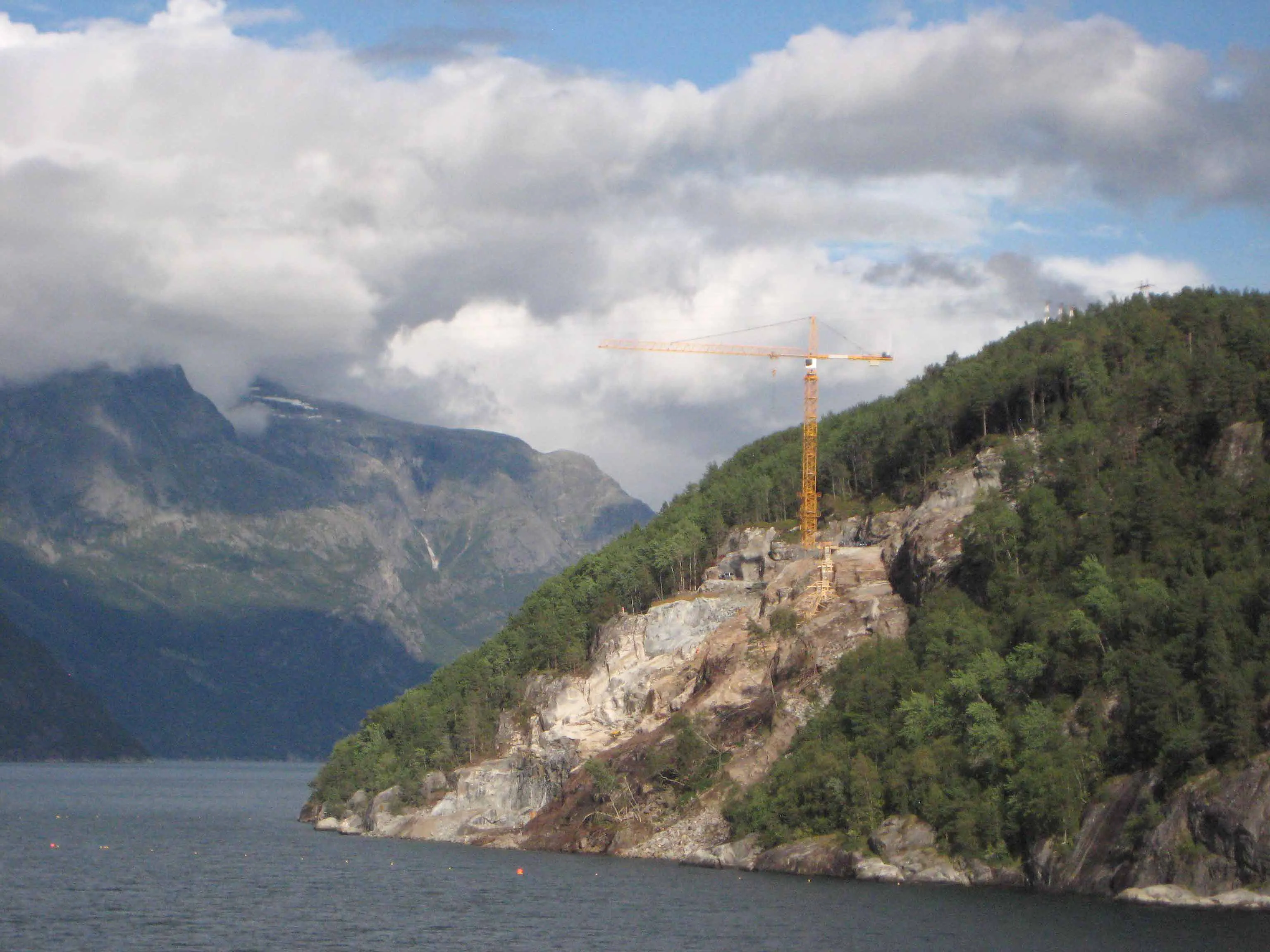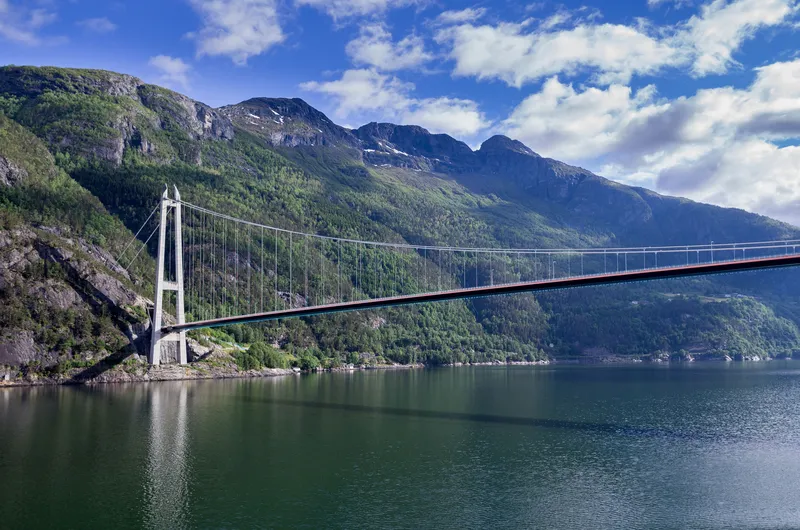AT 1.38KM LONG, the new €213 million Hardanger Bridge crossing Hardangerfjord, Norway's second largest fjord, will be the country's longest suspension bridge. The structure, designed by Norway's Forum Arkitekter, will be a new landmark with its 200m high concrete towers and steel construction.
March 2, 2012
Read time: 3 mins

AT 1.38KM LONG, the new €213 million Hardanger Bridge crossing Hardangerfjord, Norway's second largest fjord, will be the country's longest suspension bridge. The structure, designed by Norway's 1206 Forum Arkitekter, will be a new landmark with its 200m high concrete towers and steel construction.
Work on the bridge in south-western Norway started earlier this year and is due for completion in 2013. An 800m road links the bridge with its associated 2.4km tunnel, and the bridge provides an important link, which will replace the existing ferry service between Brurvik and Brimnes.1208 Statens Vegvesen, the Norwegian roads authority, has awarded the package for concrete works, including the towers, to 1209 Veidekke Entreprenør, and the steel deck and cable works to Danish contractor 1210 MT Hojgaard. The tunnels are being built by 1213 AF Skandinavia.
Veidekke Entreprenør is using three718 Liebherr 280ECH16 Litronic tower cranes, supplied on rental by crane hire specialist 1214 E D Knutsen Maskin, to help build the bridge, which will have a main span of 1.31km, making it the seventh longest suspension bridge in the world. Because of the deep fjord, the towers are placed close to the shore and the short backspans lead directly into the new tunnel on the south side and an existing tunnel on the north side.
The maximum water depth near the bridge is some 500m and the surrounding mountains are up to 1,200m high, while the bridge will have a clearance above mean high water at mid-span of 55m The three Liebherr cranes were selected for their ease of erection in the difficult terrain and their high-load, fast-lift capacity. They can carry a maximum load of 16tonnes and at the full jib length of 70m can lift 3.1tonnes. Two of the cranes will be used for assembling the towers and will be fastened to the side of the structure, giving them an eventual 200m hook height.
The third crane, on the south side, will be used for lifting duties associated with the road, tollway system and the tunnel.
In total, over 14,000tonnes of steel will be used in the construction of the bridge (the suspension cables alone weigh 6,400tonnes). Assembly of the steel will be initiated in 2011, when the concrete pillars and the construction of roads and tunnels have been completed.
The bridge will be paid for by a combination of tolls, local and regional contributions and compensation for saved ferry costs/state funding, and when competed it will have two lanes for cars and one pedestrian lane, and will carry some 2,000 vehicles/day.
Work on the bridge in south-western Norway started earlier this year and is due for completion in 2013. An 800m road links the bridge with its associated 2.4km tunnel, and the bridge provides an important link, which will replace the existing ferry service between Brurvik and Brimnes.
Veidekke Entreprenør is using three
The maximum water depth near the bridge is some 500m and the surrounding mountains are up to 1,200m high, while the bridge will have a clearance above mean high water at mid-span of 55m The three Liebherr cranes were selected for their ease of erection in the difficult terrain and their high-load, fast-lift capacity. They can carry a maximum load of 16tonnes and at the full jib length of 70m can lift 3.1tonnes. Two of the cranes will be used for assembling the towers and will be fastened to the side of the structure, giving them an eventual 200m hook height.
The third crane, on the south side, will be used for lifting duties associated with the road, tollway system and the tunnel.
In total, over 14,000tonnes of steel will be used in the construction of the bridge (the suspension cables alone weigh 6,400tonnes). Assembly of the steel will be initiated in 2011, when the concrete pillars and the construction of roads and tunnels have been completed.
The bridge will be paid for by a combination of tolls, local and regional contributions and compensation for saved ferry costs/state funding, and when competed it will have two lanes for cars and one pedestrian lane, and will carry some 2,000 vehicles/day.







